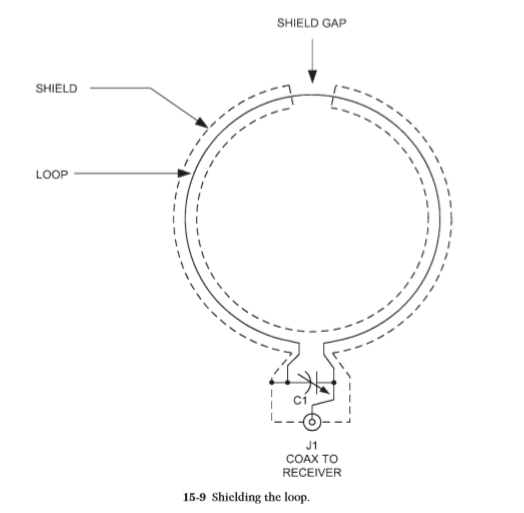Most readers will use a loop for DXing rather than hidden transmitter hunting, navigation, or other RDF purposes. For the DXer, there are actually two uses for the
loop. One is when you are a renter or live in a community that has routine covenants against outdoor antennas. In this situation, the loop will serve as an active antenna for receiving AM BCB and other low-frequency signals without the neighbors or landlord becoming PFJs (“purple-faced jerks”). The other use is illustrated by the case of a friend of mine. He regularly tunes in clear channel WSM (650 kHz, Nashville) in the wee hours between Saturday evening (“Grand Ole Opry” time) and dawn. However, this “clear” channel of WSM is not really so clear, especially without a narrow filter in the receiver. He uses a loop antenna to null out a nearby 630-kHz signal that made listening a bit dicey and can now tape his 1940s–1950s vintage country music. It is not necessary to place the desired station directly in the main lobes off the ends of the antenna but rather to place the nulls (broadside) in the direction of the offending station that you want to eliminate. So what happens if the offending station and the desired station are in a direct line with each other and your receiving location is in the middle between them? Both nulls and lobes on a loop antenna are bidirectional, so a null on the offending station also will null the desired station in the opposite direction. One method is to use a sense antenna to spoil the pattern of the loop to a cardioid shape. Another method is to use a spoiler loop to null the undesired signal. The spoiler loop is a large box loop placed 1 to 3 ft (found experimentally) behind the reception loop in the direction of the offending signal. This method was first described by Levintow and is detailed in Fig. 15-10. The small loopstick may be the antenna inside the receiver, whereas the large loop is a box loop such as the sports fan’s loop. The large box loop is placed about 33 to 100 cm behind the loopstick and in the direction of the offending station. The angle with respect to the line of centers should be 60° to 90°, which also was found experimentally. It is also possible to use two air core loops to produce an asymmetrical receiving pattern.

No comments:
Post a Comment